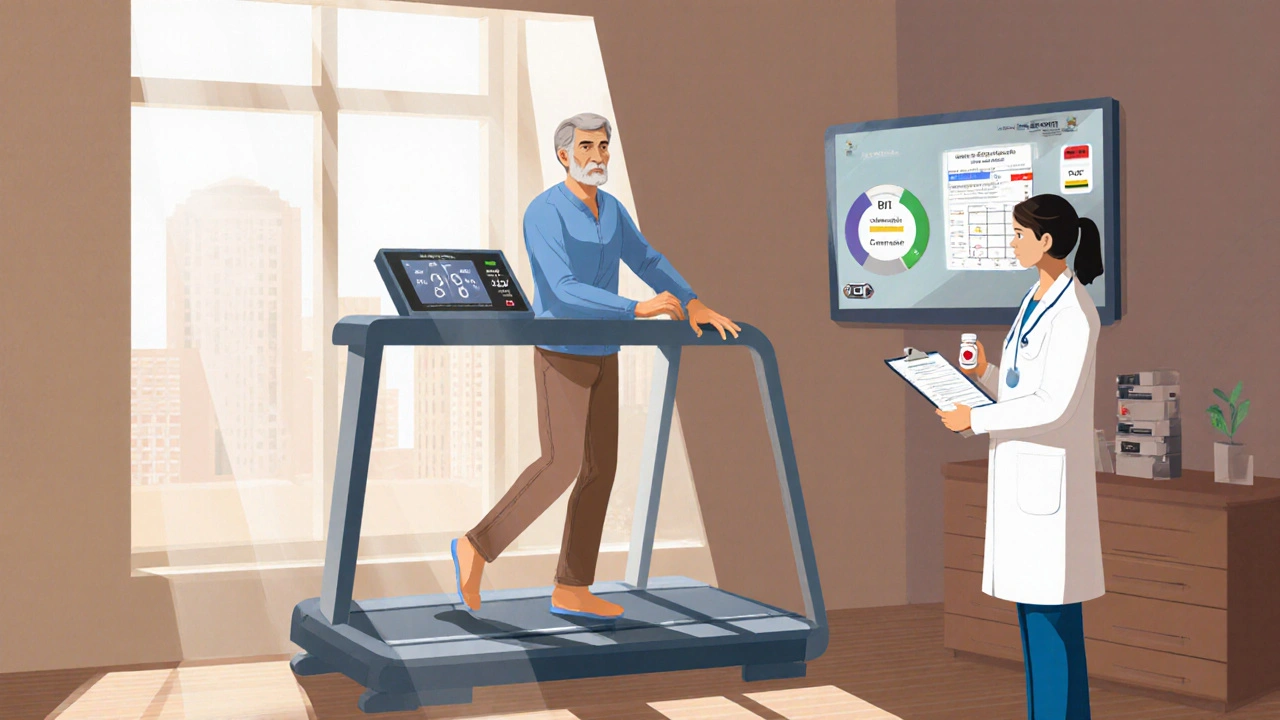Personalized Intermittent Claudication Treatment: Tailored Strategies for Better Walking
When working with personalized intermittent claudication treatment, a customized plan that eases leg pain caused by limited blood flow during activity. Also known as customized claudication therapy, it blends medication, targeted exercise, and lifestyle tweaks based on each patient’s risk profile. The goal is simple: help you walk farther without the burning ache. This approach personalized intermittent claudication treatment isn’t one‑size‑fits‑all; it starts with a clear picture of the underlying disease and builds from there.
Key Components of a Personalized Plan
The foundation is the disease itself. Most people with claudication have peripheral artery disease, a narrowing of arteries that supply the legs, typically from a buildup of plaque. Recognizing PAD is crucial because it dictates the intensity of exercise, the choice of drugs, and whether surgery might be needed later. A proper PAD assessment includes ankle‑brachial index testing, imaging, and a review of cardiovascular risk factors such as smoking, diabetes, and high cholesterol. Once PAD is confirmed, the next step is to decide how aggressively to address the blockage.
Exercise is the most powerful non‑drug tool. Supervised exercise therapy, a structured walking program run by a vascular specialist or physical therapist, has been shown to improve walking distance by 30‑50% in most trials. The therapy typically involves walking to the point of mild pain, resting, and repeating for 30‑45 minutes, three times a week. Because the program is tailored to your pain threshold and fitness level, it fits the definition of a personalized approach. For those who can’t attend a clinic, home‑based programs that mimic the supervised protocol can still deliver benefits when monitored via apps or remote coaching.
Medication rounds out the plan. Pharmacologic therapy, drugs such as cilostazol or pentoxifylline that improve blood flow and reduce muscle pain, is prescribed when exercise alone isn’t enough. Cilostazol, for example, works by widening blood vessels and inhibiting platelet aggregation, which can extend walking time by up to 150 meters. Pentoxifylline has a similar effect but is often used when cilostazol isn’t tolerated. Choosing the right drug depends on your medical history, current meds, and tolerance to side effects, illustrating how personalized intermittent claudication treatment requires a nuanced medication match.
When lifestyle changes and meds don’t achieve the desired walking distance, revascularization steps in. Revascularization, procedures like angioplasty, stenting, or bypass surgery that restore blood flow to the affected leg, is considered for severe PAD or when pain sharply limits daily activities. The decision to pursue a procedure hinges on factors like lesion location, overall heart health, and patient preference—again underscoring the personalized nature of treatment. For many, combining revascularization with continued exercise and drug therapy yields the best long‑term outcomes.
Putting it all together, personalized intermittent claudication treatment encompasses disease assessment, supervised exercise, targeted medication, and, when needed, revascularization. Each component connects to the others: a clear PAD diagnosis informs the exercise intensity, which in turn guides drug selection, and all three shape the decision about surgery. This web of relationships means you’ll get a plan that matches your symptoms, health status, and goals. Below you’ll find a collection of articles that dive deeper into each element—whether you want to understand how to measure ankle‑brachial index, pick the right walking regimen, compare cilostazol with alternatives, or explore the latest in minimally invasive revascularization techniques.

